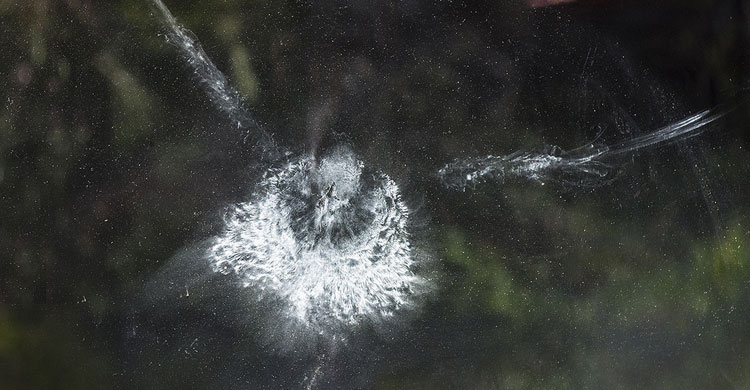Reducing Bird Mortality from Collisions with Glass

bird collision © Bill Gracey flickr
Bonn, 24 November 2015 - As if predators and the rigors of migrating hundreds and in some cases thousands of kilometres were not enough, birds are seeing their chances of surviving reduced because of a series of additional obstacles thrown in their way by human activities: draining wetlands, land use changes for agriculture and urbanization, afforestation and deforestation, pylons, powerlines, wind turbines and other energy installations.
Another menace that has taken its toll over the years is the one posed by windows and tall glass-fronted buildings, which are known to represent a particular hazard to migratory birds. The glass in windows acts like a giant mirror confusing the birds which see the sky and the clouds in the reflection. Unaware of the solid obstacle in front of them birds collide with the buildings often with fatal consequences. It is estimated by ornithologists that a minimum of 100 million birds – mainly songbirds such as finches but also many migratory species – die in this way each year in the USA alone.
An unfortunate and rather ironic fate befell a Pallas’s Warbler in 1998 which after its 4,000-mile migration from Siberia reached the East of England only to be killed by flying into the mirrored windows of a building which houses the headquarters of England’s nature conservation agency, the very body dedicated to the bird’s protection! It was particularly disappointing as this was the first time ever that the species had been recorded in the area. This incident and several others occurring each month prompted the agency’s staff to attach stickers with the silhouettes of birds of prey to the window panes. These outlines serve not only to scare birds because they represent a predator but also break up the reflectivity of the glass.
Now the American Bird Conservancy has compiled a list of 18 products designed to reduce the likelihood of birds hitting windows. Tests conducted over the past six years have proved the innovations’ effectiveness in reducing collisions and the products are both affordable and aesthetically pleasing. They are aimed at both homeowners and architects. The tests used mainly migratory birds captured for other scientific studies, every effort was made to prevent injury and the birds were released once the tests were over.
For more details see the article New Program Rates Bird-Smart Glass Products for Homeowners and Architects published by the American Bird Conservancy and featured on the Media Watch section of this site.
Last updated on 14 September 2016


